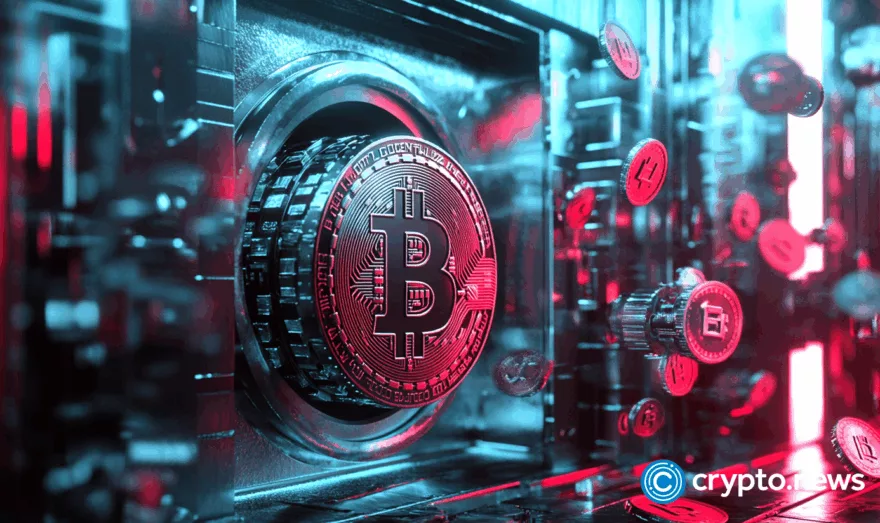How Bitcoin reserves of the largest exchanges changed since the FTX collapse

November marks two years since the FTX exchange went bankrupt. Since then, major crypto exchanges have seen their Bitcoin reserves grow.
FTX’s inability to maintain sufficient reserves to meet user requests exposed severe flaws in its controls. It also highlighted the need for greater transparency and reliable reserve reporting among all crypto exchanges.
Observers have grown keenly aware of the risks that exchanges face when they lack sufficient reserves. If they cannot meet withdrawal requests, it undermines user confidence and puts them at risk of losing funds. Maintaining adequate reserves is critical for liquidity and order execution, especially during volatile periods.
In light of this trend, CryptoQuant shared with crypto.news a study on the state of exchange proof-of-reserves (PoR).
Table of Contents
How has crypto changed post-FTX?
FTX‘s collapse in November 2022 was one of the most significant and dramatic events in the crypto industry’s history. This incident undermined investor confidence and caused profound changes in the crypto market’s structure and functioning.
At the time, the price of Bitcoin (BTC) and other major cryptocurrencies fell, reflecting fear and distrust of institutional players in the market. Many investors began to doubt the safety and stability of crypto and, as a result, decided to leave the market completely.
Attention toward security issues became even more urgent. Many crypto exchanges and projects have begun implementing new measures to protect users’ funds, including two-factor authentication, monitoring systems, and analyzing transactions for suspicious activity.
New security standards have emerged, as well as solutions to prevent the loss of funds in case of hacks or fraudulent activities. Among others, the PoR standard has emerged — a mechanism cryptocurrency exchanges use to publicly demonstrate that they have enough assets in reserve to cover all user balances.
“PoR fosters trust and transparency, as it allows users to confirm that an exchange has not over-leveraged or mismanaged their assets, which has become particularly crucial following high-profile exchange collapses in the industry.”
CryptoQuant
Major exchanges record Bitcoin outflow
Among the major exchanges with the most prominent Bitcoin reserves, only Coinbase does not publish PoR reports. Experts note that the other major exchanges periodically provide such reports with varying degrees of transparency.
Binance’s reserve increased by 28,000 BTC, or 5%, reaching 611,000, despite the pressure from the U.S. authorities in 2023. Among the major exchanges, Binance also shows the most minor reserve decrease over the entire period, not exceeding 16%.

Three key exchanges hold 75% of all Bitcoins held by exchanges. These are Coinbase Advanced, with 830,000 BTC, Binance with 615,000, and Bitfinex, which has 395,000 Bitcoins.
Together, the reserves of these platforms reach 1.836 million BTC, which is 9.3% of the total amount of Bitcoins in circulation. The remaining 17 exchanges hold a total of 684,000 BTC.
Reserves landing
Currently, Binance, Bitfinex, and OKX show small decreases in reserves. At the same time, Binance appears to be the only exchange that has not experienced significant drawdowns in its history.
Analyzing exchange reserves based on tracking their changes allows us to assess their ability to meet user demands over time.
Significant declines may indicate that users are massively withdrawing their funds, indicating a decrease in trust or financial problems.
The most significant decline in Binance’s reserves was 15%, which occurred in December 2022, shortly after the FTX crash. At the time, Binance faced considerable criticism and distrust over its reserve report.
However, Binance’s reserves have recovered and are currently down only 7%. Other significant exchanges have also seen slight declines, with Bitfinex down 5% and OKX down 11%.

While industry leaders like Binance and Bitfinex have managed to shore up their reserves since the FTX crash, the situation is still tense. The failure of some major players like Coinbase to publish PoR reports suggests that the road to full transparency is still far off. But the current reserve dynamics indicate a desire to improve and increase users’ trust.
The expert, in a comment to crypto.news, emphasized that the bankruptcy of FTX underscored the need for crypto exchanges to prove that they have enough reserves.
“This event led to a shift where users prefer exchanges that show proof of their assets on-chain. This pushed the industry to adopt PoR practices, helping rebuild trust and ensure exchanges can back up their users’ funds.”
Nick Pitto, head of marketing at CryptoQuant















